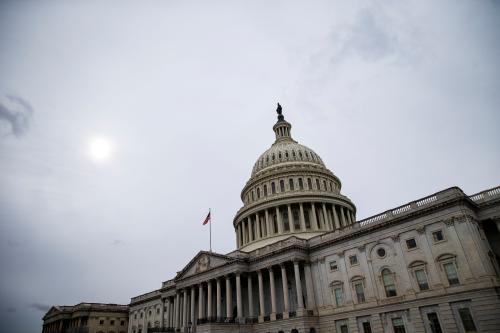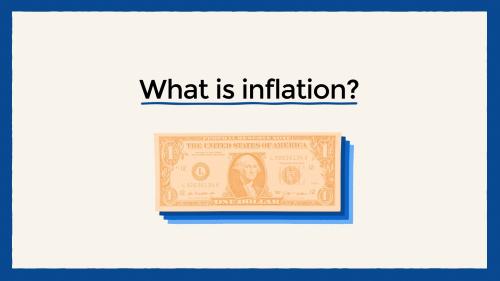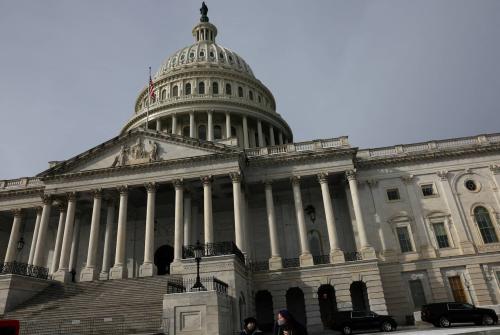This op-ed originally appeared in Real Clear Markets.
The General Accountability Office (GAO) delivered a dose of bad news just before Tax Day. “The federal government’s current fiscal path is unsustainable,” warns the government’s accountants. Among other gloomy tidings, within about 15 years publicly held debt will soar beyond its all-time high of 106% of GDP, seen at the end of World War II. That is more than double the average since 1946. Meanwhile, GAO forecasts, the Medicare hospital trust fund will be depleted by 2026, and by 2034 so will Social Security’s trust fund. Those programs’ trustees sound a similar alarm. By law, this will force a major cut in benefits.
What is particularly worrying about this is that there isn’t much new in the report. The GAO and the Congressional Budget Office (CBO) have been issuing similar dire warnings for years. But nothing seems to change in the desire – or lack of desire – of Congress to take decisive steps to address the long-term budget problem.
Perhaps that should not be a surprise. Fixing the structural imbalance would require taking actions that are politically painful for lawmakers today (raising taxes, reducing benefits etc.), while the economic and political payoff would be many years in the future. And with interest rates, inflation and unemployment are so low, and the stock market doing so well, the public is hardly clamoring for austerity.
How can we change the political dynamics and get the public and Congress to face up to GAO’s warnings? I think it requires a three-part strategy.
One element is to boost the profile of the information given to Americans. The problem today is not a lack of information, given the steady stream of worrying information emanating from CBO, GAO and many other sources. What’s needed is to consolidate that information into one annual blockbuster report, with a requirement that Congress must vote on what action to take. That is why some bipartisan advocates of budget reform, inside and outside Congress, argue for a high-profile “Fiscal State of the Nation,” officially presented to a joint session of Congress and broadcast to the country. Add to this an official set of options to restore solvency to programs like Social Security – and a requirement to vote on them – and we might at last have a serious public debate.
The second element is to make more use of commissions and similar bodies to build the public case for action steps. Congress has often found that creating special bodies –of lawmakers, outside experts, or both – can generate public support for difficult actions and craft a balanced package of steps. The 1981 Greenspan Commission, for example, prepared the political ground for tough action to save the Social Security system. The Defense Base Closure and Realignment Commission (BRAC) helped Congress overcome local lawmaker opposition to closing unnecessary bases.
Commissions do not always succeed, however. The 2010 “Simpson-Bowles” commission drew up an impressive bipartisan plan to address long-term debt reduction, but its proposals went nowhere. History suggests that there are three “must haves” for success. One is public and political agreement that a problem is real and must be solved (hence the importance of the information element). Second, there must be clear procedures for deciding on recommendations and for Congress to vote on those recommendations. And, third, strong congressional and White House buy-in is crucial (because unless political leaders hang together, to borrow from Ben Franklin’s adage, they are likely to hang separately).
The third strategic element is to enact a long-term budget. Today we have long-term projections, but no long-term budget. A long-term budget means Congress would enact a framework budget, say for the next 25 years, with spending, borrowing and revenue levels and the broad programmatic steps needed to achieve those levels. A key feature would be automatic, default policy “triggers” to keep the budget on track if Congress failed to enact its own way of keeping within the framework.
To be sure, even if lawmakers were pressured by a Fiscal State of the Nation and a long-term budget into taking action, they would still be inclined to phase in painful policy actions as slowly as possible. But as the gradual Social Security reforms after the 1981 Commission teach us, it is still better to have steps phased in slowly than no steps at all.
Are we likely to see a strategy like this unfolding this year, or next year? Probably not. But, as the GAO’s report indicates, crunch time is getting very close for avoiding sharp cuts in America’s most beloved programs. Politicians risk public backlash if they wait too long. So, hopefully, another Franklin aphorism will soon start to focus lawmakers: “Nothing concentrates the mind like the prospect of being hanged at dawn.”







Commentary
Op-edGetting Congress to confront our growing fiscal problem
April 25, 2019